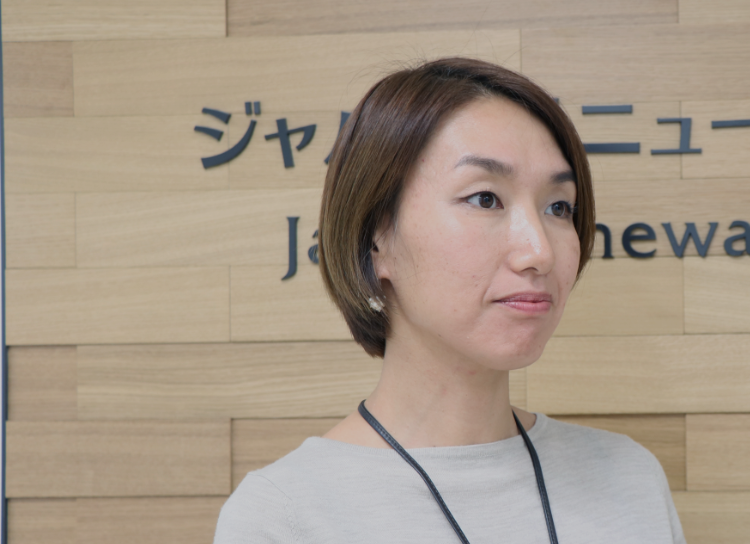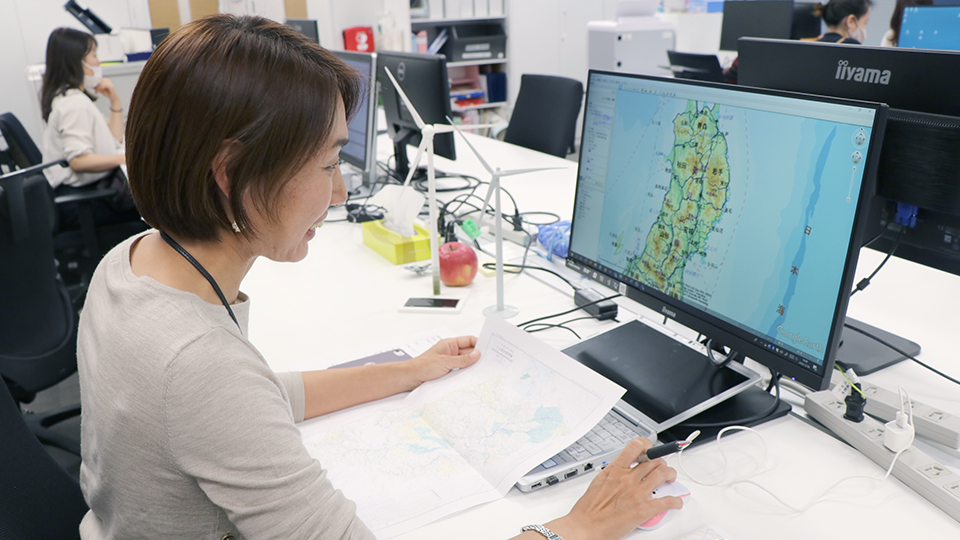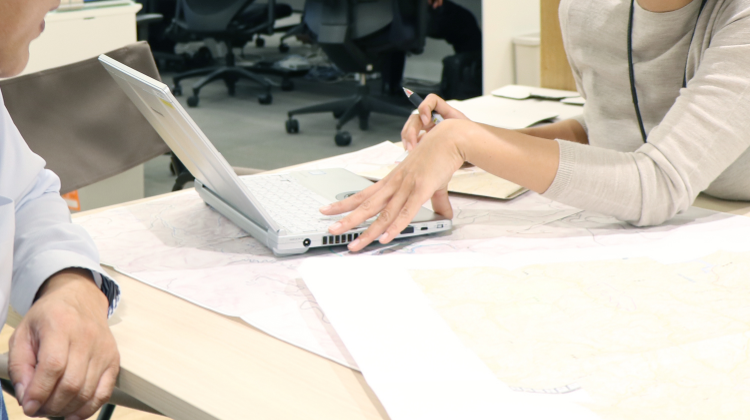Interview
Business Development Division
Project Development Department-2
Project Development Team-4
Hisae Umezawa
Renewable Energy
※ Company names and affiliations in the article are as of the time of publication


Business Development Division
Project Development Department-2
Project Development Team-4
Hisae Umezawa
My job is to find suitable sites for building onshore wind power plants. First we conduct desk-based research, using wind maps published by Japan’s Ministry of the Environment to search for regions where the wind blows reliably. We make full use of road maps and a certain well-known online map site to narrow down the potential locations according to their topography and the roads nearby. Then we actually visit the locations and check the situation on the ground. Our team’s mission is to make initial contact with stakeholders including land owners, members of the community, and local government officials to obtain permission to erect an observation tower for monitoring actual wind conditions, and to guide the process up until the observation tower is erected.
When we’ve considered the wind observation data and the other requirements, and made a final decision on a suitable site, we hand over to the next development team. So, our focus is to establish the foundations for communication that will enable that team to negotiate smoothly with local people when they take over. Fortunately, I’m the sort of person who likes chatting with people, including those I’m meeting for the first time, so I enjoy the interaction. I start conversations with all sorts of people at the survey site, including farmers working in the fields, people who are shopping, or those who are just out for a walk.
Sometimes, we’ve gone to the trouble of erecting an observation tower, but when we actually measure the wind conditions, they differ from those shown on the wind map and we can’t get the data we want. When that happens, it’s disappointing and I feel like I want to file a complaint about the wind map [laughs]. But, joking aside, what made the biggest impression was something that happened in the course of my interactions with local people. At one particular site, I was feeling down about some difficult negotiations when a local person encouraged me, saying, “Don’t let it beat you; we’re on your side.” It really cheered me up and gave me a positive boost. The other thing that’s meant a lot to me is the enjoyment I get out of contact with nature, although whenever we start onsite surveys we always experience difficulties, such as the car breaking down on a forest road on the way there, having to forge a new trail toward a mountain summit, or being engulfed by a sudden downpour.

When we’re building wind power plants I want us not only to contribute economically to local communities, but also to contribute by improving their environments through activities such as planting and thinning trees around the vicinity of the plants. As a matter of fact, I’ve been really into surfing for about three years now. Lots of surfers, including myself, are very aware of environmental issues, and recognize that ecological interconnectedness means ruined mountains lead to ruined seas. That’s why I’m convinced that popularizing environmentally friendly renewable energy-based power generation and safeguarding the environment are crucial undertakings for the sake of our future.

